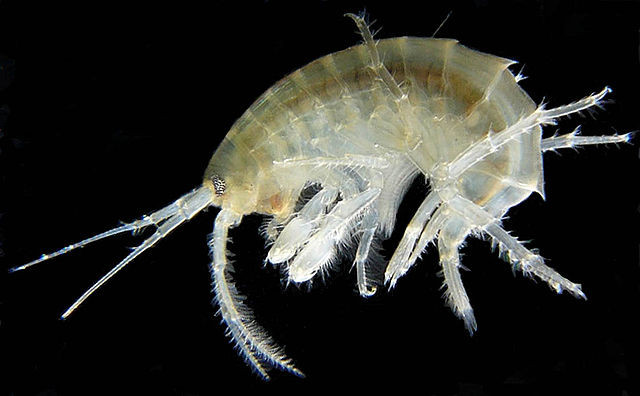Amphipoda is an order of malacostracan crustaceans with no carapace and generally with laterally compressed bodies. Amphipods range in size from 1 to 340 millimetres and are mostly detritivores or scavengers. There are more than 9,900 amphipod species so far described. They are mostly marine animals, but are found in almost all aquatic environments. Some 1,900 species live in fresh water, and the order also includes the terrestrial sandhoppers such as Talitrus saltator and Arcitalitrus sylvaticus.
Amphipoda
Amphipods are typically less than 10 millimetres (0.4 in) long
Ampelisca brevicornis (Gammaridea: Ampeliscidae)
Lepidepecreum longicorne (Gammaridea: Lysianassidae)
Malacostraca is the second largest of the six classes of pancrustaceans just behind hexapods, containing about 40,000 living species, divided among 16 orders. Its members, the malacostracans, display a great diversity of body forms and include crabs, lobsters, crayfish, shrimp, krill, prawns, woodlice, amphipods, mantis shrimp, tongue-eating lice and many other less familiar animals. They are abundant in all marine environments and have colonised freshwater and terrestrial habitats. They are segmented animals, united by a common body plan comprising 20 body segments, and divided into a head, thorax, and abdomen.
Leptostraca such as Nebalia bipes retain the primitive condition of having seven abdominal segments.
Grapsus grapsus, a terrestrial crab
Squilla empusa, a mantis shrimp
Odontodactylus scyllarus (Hoplocarida: Stomatopoda)








